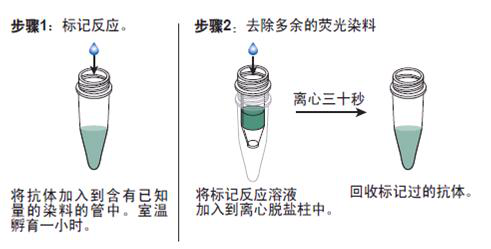
|

| 产地 | 进口、国产 |
| 品牌 | 上海莼试 |
| 保存条件 | Store at -20 °C |
| 货号 | CS9760 |
| 应用范围 | WB=1:100-500 ELISA=1:500-1000 IHC-P=1:100-500 IHC-F=1:100-500 ICC=1:100-500 IF=1:100-500 |
| CAS编号 | |
| 抗体名 | Anti-NOR1 |
| 克隆性 | |
| 靶点 | 详见说明书 |
| 适应物种 | 详见说明书 |
| 形态 | 详见说明书 |
| 宿主 | 详见说明书 |
| 亚型 | IgG |
| 标识物 | 详见说明书 |
| 浓度 | 1mg/1ml% |
| 免疫原 | KLH conjugated synthetic peptide derived from human NOR1 |
产品订购信息:
英文名称 Anti-NOR1
中文名称 神经元衍生孤儿受体1抗体说明书
别 名 CHN; Chondrosarcoma, extraskeletal myxoid, fused to EWS; CSMF; MINOR; Mitogen induced nuclear orphan receptor; Mitogen-induced nuclear orphan receptor; Neuron derived orphan receptor 1; Neuron derived orphan receptor; Neuron-derived orphan receptor 1; NOR1; Nr4a3; NR4A3_HUMAN; Nuclear hormone receptor NOR-1; Nuclear hormone receptor NOR1; Nuclear receptor subfamily 4 group A member 3; TEC; Translocated in extraskeletal chondrosarcoma.


浓 度 1mg/1ml
规 格 0.2ml/200μg
抗体来源 Rabbit
克隆类型 polyclonal
交叉反应 Human, Mouse, Rat, Dog, Rabbit
产品类型 一抗
研究领域 细胞生物 神经生物学 信号转导 表观遗传学
蛋白分子量 predicted molecular weight: 68kDa
性 状 Lyophilized or Liquid
免 疫 原 KLH conjugated synthetic peptide derived from human NOR1
亚 型 IgG
纯化方法 affinity purified by Protein A
储 存 液 Preservative: 15mM Sodium Azide, Constituents: 1% BSA, 0.01M PBS, pH 7.4
神经元衍生孤儿受体1抗体说明书 产品应用 WB=1:100-500 ELISA=1:500-1000 IHC-P=1:100-500 IHC-F=1:100-500 ICC=1:100-500 IF=1:100-500
(石蜡切片需做抗原修复)
not yet tested in other applications.
optimal dilutions/concentrations should be determined by the end user.
保存条件 Store at -20 °C for one year. Avoid repeated freeze/thaw cycles. The lyophilized antibody is stable at room temperature for at least one month and for greater than a year when kept at -20°C. When reconstituted in sterile pH 7.4 0.01M PBS or diluent of antibody the antibody is stable for at least two weeks at 2-4 °C.
Important Note This product as supplied is intended for research use only, not for use in human, therapeutic or diagnostic applications.
产品介绍 Nur77 (also designated NGFI-B), Nurr1 (Nur-related factor 1), and NOR-1 (neuron-derived orphan receptor 1) constitute the NGFI-B subfamily within the nuclear receptor superfamily. Ligands for these protein have not been identified, and, therefore, they are designated “orphan nuclear receptors”. Genes of the NGFI-B subfamily are classified as immediate-early genes, which are induced rapidly, but transiently, in response to a variety of stimuli. They have been implicated in cell proliferation, differentiation, and apoptosis. The human NOR-1 gene maps to chromosome 9q, and encodes a protein which is expressed in heart, skeletal muscle, thymus, and spleen as well as in brain, where it is developmentally regulated. There-fore, NOR-1 may be involved in regulating neural differentiation. The NOR-1 gene also undergoes chromosomal translocation with the EWS gene to produce a protein thought to affect pre-mRNA splicing.
Function : Binds to the B1A response-element.Subcellular Location : Nucleus.Tissue Specificity : Isoform alpha is highly expressed in skeletal muscle. Isoform beta is highly expressed in skeletal muscle and low expressed in fetal brain and placenta.DISEASE : Defects in NR4A3 are a cause of Ewing sarcoma (ES) [MIM:612219]. A highly malignant, metastatic, primitive small round cell tumor of bone and soft tissue that affects children and adolescents. It belongs to the Ewing sarcoma family of tumors, a group of morphologically heterogeneous neoplasms that share the same cytogenetic features. They are considered neural tumors derived from cells of the neural crest. Ewing sarcoma represents the less differentiated form of the tumors. Note=A chromosomal aberration involving NR4A3 is found in patients with Erwing sarcoma. Translocation t(9;22)(q22-31;q11-12) with EWSR1. Note=A chromosomal aberration involving NR4A3 is a cause of a form of extraskeletal myxoid chondrosarcomas (EMC). Translocation t(9;17)(q22;q11) with TAF2N.Similarity : Belongs to the nuclear hormone receptor family. NR4 subfamily.Contains 1 nuclear receptor DNA-binding domain.Database links : UniProtKB/Swiss-Prot: Q92570.3

Anti-VIP receptor II/FITC 荧光素标记腺苷酸环化酶激活肽受体-II/活性肠肽受体-II抗体IgGMulti-class antibodies规格: 0.2ml
Rabbit Anti-mouse IgM/Biotin 生物素化兔抗小鼠IgMMulti-class antibodies规格: 0.3ml
趋化因子配体1抗体 anti-cx3cl1 0.1ml
Rabbit anti-MG IgG/PE-Cy7 PE-Cy7标记的兔抗长爪沙鼠IgG 0.1ml
FABP5 英文名称: 脂肪酸结合蛋白5抗体(上皮细胞型) 0.1ml
Rhesus antibody Rh phospho-VEGFR2 (Tyr1175) 磷酸化内皮生长因子受体2抗体 规格 0.1ml
Rabbit Anti-mouse IgM/Biotin 生物素化兔抗小鼠IgMMulti-class antibodies规格: 0.3ml
IL-6R Alpha (IL6R-alpha) 白细胞介素6受体α抗原Multi-class antibodies规格: 0.5mg
Anti-Adducin protein 内收蛋白抗体Multi-class antibodies规格: 0.2ml
Rhesus antibody Rh Phospho-cdc25C (Ser216) 磷酸化细胞分裂周期蛋白25C抗体 规格 0.1ml
非水溶性封 10ml 使用后组织收缩较明显
WBP2 英文名称: WBP2蛋白抗体 0.2ml
DDX23 英文名称: 三磷酸腺苷依赖解旋酶DDX23抗体 0.2ml
Anti-Adducin protein 内收蛋白抗体Multi-class antibodies规格: 0.2ml
SNAP23 英文名称: 突触相关蛋白23抗体 0.2ml
Exportin 5 英文名称: 核输出蛋白5抗体 0.2ml
巨噬细胞炎性蛋白3α抗体 Anti-CCL20/MIP3αMacrophage inflammatory ptotein 3 alpha 0.1ml
Anti-VAMP-1/FITC 荧光素标记囊泡相关膜蛋白1抗体IgGMulti-class antibodies规格: 0.2ml
Rhesus antibody Rh Phospho-HER4 (Tyr984) 磷酸化HER4抗体 规格 0.1ml
CD14(cluster of differentiation antigen 14) CD14/内毒素受体抗原Multi-class antibodies规格: 0.5mg
BrilliantGreenAgarw/Sulfadi
ISPMedium
改良BPLS琼脂 BPLS Agar,Modified 250 用于各种标本中沙门氏菌选择性分离培养(ISO标准)
Dey/Engley中和肉汤基础250g/瓶用于化妆品样品的制备和卫生环境中细菌的培养,每升培养基中需添加0204incubationmediaDey/Engley中和肉汤基础250g/瓶用于化妆品样品的制备和卫生环境中细菌的培养,每升培养基中需添加0204
HektoenEntericAgar
MCMedium
精氨酸葡萄糖斜面琼脂(AGS) 用于霍乱弧菌的复合生化试验(SN标准)
胰化蛋白胨 Tryptone 250克 BR
TGY肉汤培养基250g/瓶用于芽孢菌的培养incubationmediaTGY肉汤培养基250g/瓶用于芽孢菌的培养
SOCMedium
神经元衍生孤儿受体1抗体说明书 350ML培养袋 规格: 15x30cm(10个/袋) 用途: 可重复使用;使用350ml厌氧产气剂(C-11)一袋;可装2-4个培养皿。
完全释放型采样拭子 规格: 50支/盒 用途: 用于采集、保存和转送食品、环境及临床标本至微生物实验室
HK-Swab采集运送装置(Cary-Blair) 规格: 50支/盒 用途: 改良Cary-Blair运送培养基
HK-Swab采集运送装置(改良Stuart) 规格: 50支/盒 用途: 改良Stuart运送培养基

抗体的生物素化标记实验要点:
1. 神经元衍生孤儿受体1抗体说明书 如在反应混合液中有叠氮钠或游离氨基存在,会抑制标记反应。因此,蛋白质在反应前要对 0.1mol/L碳酸氢钠缓冲液或0.5mol/L硼酸缓冲液充分透析;
2.所用的NHSB及待生物素化蛋白质之间的分子比按蛋白质表面的ε-氨基的密度会有所不同,选择不当则影响标记的效率,应先用几个不同的分子比来筛选最适条件;
3.用NHSB量过量也是不利的,抗原的结合位点可能因此被封闭,导致抗体失活;
4.由于抗体的氨基不易接近可能造成生物素化不足,此时可加入去污剂如 Triton x-100, Tween20等;
5.当游离ε-氨基(赖氨酸残基的氨基)存在于抗体的抗原结合位点时,或位于酶的催化位点时,生物素化会降低或损伤抗体蛋白的结合力或活性;
6.生物素还可能与不同的功能基团,如羰基、氨基、巯基、异咪唑基及*基,也可与糖基共价结合;
7.交联反应后,应充分透析,否则,残余的生物素会对生物素化抗体与亲和素的结合产生竞争作用;
8.在细胞的荧光标记实验中,中和亲和素的本底低,但由于链霉亲和素含有少量正电荷,故对某些细胞可导致高本底。
抗体的鉴定:
1)神经元衍生孤儿受体1抗体说明书 抗体的效价鉴定:不管是用于诊断还是用于,制备抗体的目的都是要求较高效价。不同的抗原制备的抗体,要求的效价不一。鉴定效价的方法很多,包括有试管凝集反应,琼脂扩散试验,酶联免疫吸附试验等。常用的抗原所制备的抗体一般都有约成的鉴定效价的方法,以资比较。如制备抗抗体的效价,一般就采用琼脂扩散试验来鉴定。
2)抗体的特异性鉴定:抗体的特异性是指与相应抗原或近似抗原物质的识别能力。抗体的特异性高,它的识别能力就强。衡量特异性通常以交叉反应率来表示。交叉反应率可用竞争抑制试验测定。以不同浓度抗原和近似抗原分别做竞争抑制曲线,计算各自的结合率,求出各自在IC50时的浓度,并按公式计算交叉反应率。
如果所用抗原浓度IC50浓度为pg/管,而一些近似抗原物质的IC50浓度几乎是无穷大时,表示这一抗血清与其他抗原物质的交叉反应率近似为0,即该血清的特异性较好。
3)抗体亲和力:是指抗体和抗原结合的牢固程度。亲和力的高低是由抗原分子的大小,抗体分子的结合位点与抗原决定簇之间立体构型的合适度决定的。有助于维持抗原抗体复合物稳定的分子间力有氢键,疏水键,侧链相反电荷基因的库仑力,范德华力和空间斥力。亲和力常以亲和常数K表示,K的单位是L/mol。抗体亲和力的测定对抗体的筛选,确定抗体的用途,验证抗体的均一性等均有重要意义。